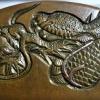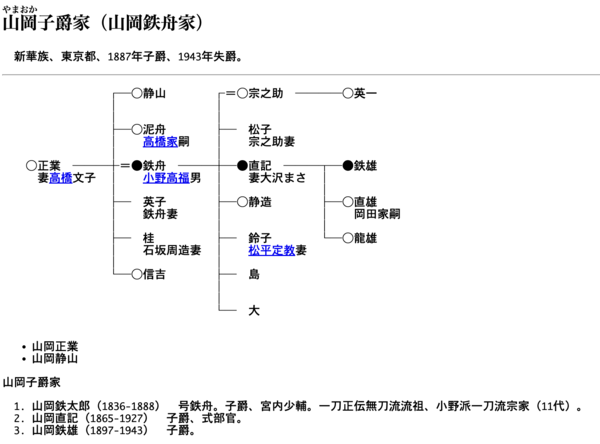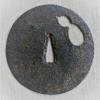All Activity
- Past hour
-

Assistance with information on old business card
SteveM replied to PNSSHOGUN's topic in Translation Assistance
Then maybe the very last one is 部 (something like 情報部)? -
I think the collaborator is indeed Murata Kōkoku. I'm looking at some of his seals, and he's got one very similar to the one on this scroll. (see below and at http://inkan-search.net/search/detail.php?id=50 ). The content of the text... a bit more challenging. I can only pick out words here and there, and these without much confidence 香、都、京、時
- Today
-
Hmmm. Not the fine itame mokume style of Norishige (so well regarded at TokuJu) and yet not quite the beautiful and desirable matsukawa hada. Quite a bit of hadatachi and nagare in a style in-between. Some other Norishige blades have what looks like utsuri (eg attached). Here there are some spots which look almost like sumihada but it is not clear what it is. One will need to look into the sayagaki in detail… And yes, the habaki is exceptional
-
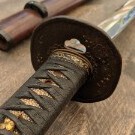
How much should seppa cost?
George KN replied to George KN's topic in General Nihonto Related Discussion
Thank you all! I really do appreciate it, as there does seem little information about what is a "normal" price for them, so the range of examples is super useful. One day I'd very much like to try my hand at making a pair out of copper, or the leather shims, but it's just not going to happen for a while I am surprised though that there doesn't seem to be someone known for making them to order - since tsuka shrink and especially gunto having so many variations of where the chuso clip ana can be, it feels like there would be a business opportunity there at the right price. But admittedly the detailing looks like it would be quite hard to automate efficiently... -
Anyone know this NBTHK Exhibition sword's identity?
nulldevice replied to Schneeds's topic in Nihonto
The habaki is really cool! -
Speaking of Norishige what do people think of this early Juyo Norishige tachi that just dropped on Eirakudo? Are the cloudy areas utsuri? https://eirakudo.shop/928608
-
Nothing on Ken's out there?
-
Hi Michael, i have some Mino blades but wouldn't say i bought them because I'm into Mino, they just appealed at the time. Love Koto hada, love Nie, though the blade above im sure has wonderful jigane, the hamon im afraid is much too unrefined, as you point out. The nio-guchi appears a bit inconsistent, maybe that's down to age or photo. Really dont like the the patch of nie above the hamon, around 3 inches from the kissaki, at all. Though without doubt there is stuff to like. polish appears fantastic in the images. To me, there are far more appealing swords of that era. Think sometimes its better being honest, than sitting on the fence. Sure i will have swords that's many don't like.
-
Alex if I am not mistaken you are into Mino? Or perhaps I got that wrong. This is Soshu style and hence quite ara nie heavy. Not for everyone indeed and I also prefer a more refined nie experience.
-
Not really H, need to pursue this more Both are late Soshu/ Soshu inspired but not quite top Soshu. Therefore when you see such Soshu like works which are not as refined and sophisticated as top / core Soshu, you default to Sanekage or Tametsugu. Perhaps not enough nagare or togari for the N Shizu attribution
-
Hello, Glad I could help. Hokkoku mono is a great vibe. If you're into wild rings of jinie and chickei with bold nie activity, they're for you. What's wonderful about Hokkoku-mono is that they're about as far away as Shinto / Shinshinto / Gendai that you can be. If you're new with Koto, these swords offer a wonderful contrast with their conspicuous jihada and activity. While certainly rustic to some extant, they exude a sense of power that is unmistakable, and along with the dark steel luster, project an ancient, fearsome presence Go Yoshihiro and Norishige, who are first class grandmaster, and are both connected to these areas as well. Difficult to tell apart based on the photos. There is a certain quality gradient at play here. For Sanekage, you want to see Norishige-style "almost" Matsukawa hada. Personally, one of the first swords that really struck a cord with me was a Sanekage. I wrote about it here. Best, Hoshi
-
I'm working my way through my collection, posting nice pieces by Zen Masters and Buddhist Nuns that have a remaining element of art history mystery, in the hopes that our community can help to fill in the missing pieces, while allowing opportunity for communal art appreciation and learning that is so relevant to the Japanese aesthetic running throughout NMB. Yamaoka Tesshu (山岡 鉄舟), 1836-1888. This delightful work is purported to be a collaboration between Yamaoka as the calligraphy and his eldest daughter, Koya 香谷 (Fragrant Valley?) as the painter. I cannot make out the calligraphy, but presumably it refers to some aspect of a blossoming plum (or cherry) tree. According to Yamaoka's family tree in the firsthand account 女士道 : 鉄舟夫人英子談話 (published 1903, but I can't find this) of his wife Yamaoka Fusako (山岡英子), he had 3 sons and 3 daughters, but I'm not sure that Koya is among them unless 香谷 is an artist name if indeed that is the mei. There is, another prominent artist of the Nanga-school named Murata Kōkoku (村田 香谷, born as Murata Shuku 村田 叔, 1831-1912) who would have lived during the late Edo- and early Meiji-periods when Yamaoka was active, but the mei and seal below the painting don't support this attribution. If these two types of work weren't produced at the same time, I think that it is more likely that Yamaoka brushed calligraphy on the painting rather than the other way around, but they look to have been done together. On this work,Yamaoka's uses a seal in clerical scripot that doesn't appear very often, but that matches that used for an inscription with mei that he brushed for a formal portrait made when he was 51 (1886)--two years before his untimely death. His mei also corresponds to that time period, having evolved steadily, especially after his enlightenment experience at age 45.
- 1 reply
-
- 2
-

-
How much should seppa cost?
Kotetsu1959 replied to George KN's topic in General Nihonto Related Discussion
George, Prices and quality do vary widely. Matched sets are obviously going to command a premium, as will gold foil seppa. Also, in respect to old Japanese seppa, as Rob observes above, there are many more smaller ones than larger ones. There are sometimes good deals to be found at shows. As with swords, the quality and quantity are diminishing. Timing and luck loom large. If you check the link Bruce posted, you will see that the price is $20-25 apiece rather than $25 for the lot. A nice large seppa that works for your needs is a bargain at $10, and perhaps worth considerably more depending on how well it fits and looks. For odd military seppa, I would say $25 is on the very high end. -
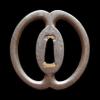
Assistance with information on old business card
Nobody replied to PNSSHOGUN's topic in Translation Assistance
I guess that 山本淸 (Yamamoto Kiyoshi, 1883-1960) is the Yamamoto Gonbe’s oldest son. Yamamoto Kiyoshi was a naval officer, politician, and nobility. His father Yamamoto Gonbe (山本権兵衛) was an admiral of the Navy. Ref. 山本清 (海軍軍人) - Wikipedia Ref. Yamamoto Gonnohyōe - Wikipedia Yamamoto Kiyoshi was living in Shiba-ku, Takanawadai-machi in early Showa period. I guess that the card was used before or during WWII. The first three characters of the handwriting might be 外務省 (the Foreign Ministry). -
Good we all like different stuff. Maybe the pictures but to me that hamon looks terrible, erratic. First post sword, that is.
-

Help Identifying Blade From WW2
Bruce Pennington replied to Fuyu No Tsuki's topic in Military Swords of Japan
We do see these kind of tanto periodically. Without actual provenance, we are just making educated guesses as to it's origins. There is photo of a Japanese soldier holding broken sword. We know there were repair teams in the field fixing broken swords. So, we know it is possible that this blade came from a broken sword, and someone possibly used the end to craft a tanto. -

Assistance with information on old business card
SteveM replied to PNSSHOGUN's topic in Translation Assistance
Pretty close. The address on the card (Shiba-ku, Takanawadai-machi #32) isn't there anymore, and it is now located somewhere in Minato-ku Takanawa 1 (near Takanawa Gateway station). Must be a really old card, because the phone numbers haven't looked like that since early 1960s, maybe? I can't read any of the handwriting. Maybe the 3rd is 石 (stone) and maybe the last is 卸 (wholesale). -

Authentic WWII Japanese Navy Gunto, signed 酒句兼代作, minty IJN tassel
Rawa replied to Swords's topic in Military Swords of Japan
True especially that he have made many stamped blades. -
Help Identifying Blade From WW2
Fuyu No Tsuki replied to Fuyu No Tsuki's topic in Military Swords of Japan
Thanks for the reply, Grey. I would agree with you, except this was pre-occupation. My grandfather was in the Pacific, Guadalcanal/Solomon Islands for 1-2 years and returned stateside February 1944. He did have a brother who was a Marine who came home after Iwo Jima. I believe he was stateside by August 1945. So neither really had the opportunity to buy it as a souvenir. Both of them were out of the service by the time Japan surrendered, and neither ever went back, wanted nothing to do with the Pacific Ocean ever again. The shirasaya seems to actually be made of magnolia which is even more confusing. I guess I was just wondering if anyone has ever seen anything pop up like this before… Dom -
Thank you! Props to Hoshi and Michael!
-
Lack of a stamp doesn't indicate Gendaito, but presence of one indicates Showato. When getting a military sword, you have to assume an "arsenal" type blade no matter if there is a stamp or not. Only when you look at the hamon and hada can you start thinking it may be better. If you have activity and hada, you can then start suspecting water quenched and/or forged. Without those, forget about what the mei tells you. But in this case, even the mei looks like a classic Seki Showato. Maybe with some additional processes in the forging, but nothing there points towards Gendaito.
-
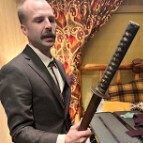
Where to find an expert authenticator pre-sale? (west coast US)
Scogg replied to SonoSam's topic in Military Swords of Japan
Hi @Dante Gambino, I deleted the post in the Nihonto section, because the information on this sword can be found here. Best of luck, -Sam







